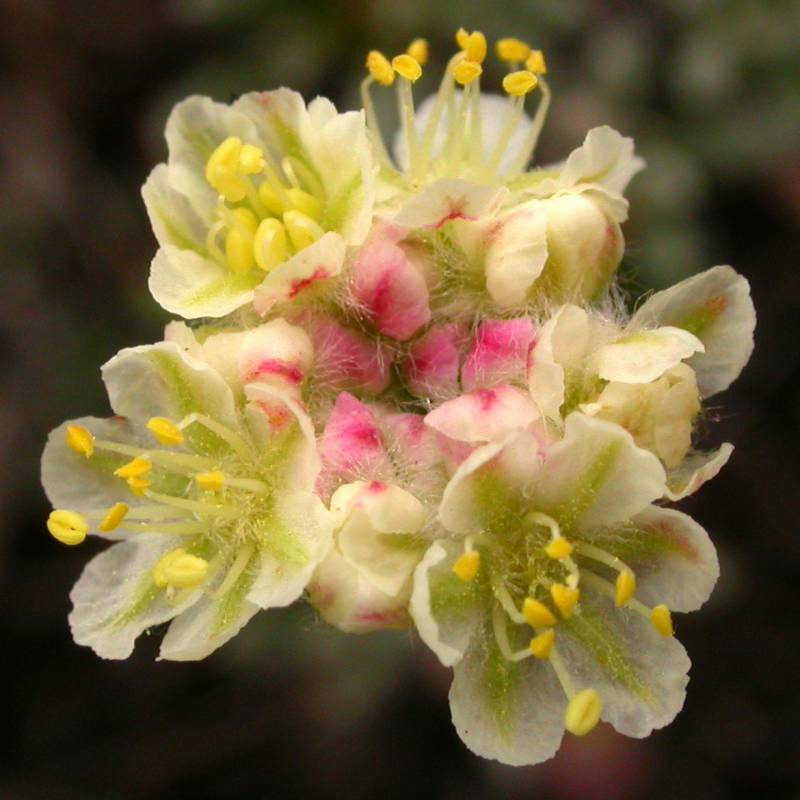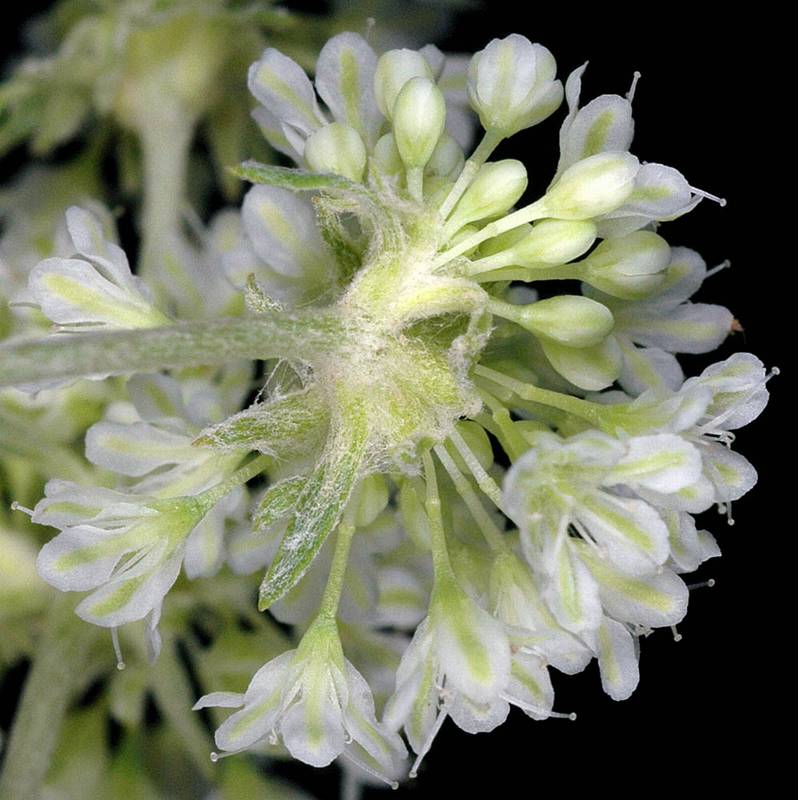|
thyme buckwheat, thyme-leaf wild buckwheat
|
bractless parsnip-flowered wild buckwheat, parsnip-flowered buckwheat, parsnip-flowered eriogonum
|
| Intricately branched, low and spreading to erect shrub 5-15 cm. tall, somewhat gray-woolly to silky throughout. |
Perennial with a branched, woody base forming clumps up to 6 dm. broad and 4 dm. high, generally white-woolly throughout. |
Leaves many, linear to linear-spatulate, 3-10 mm. long, usually revolute, somewhat wooly beneath and silky above. |
Numerous, basal, on petioles several times as long as the blade; blades linear-lanceolate to broadly oblanceolate, grayish-lanate on both surfaces or only sparsely tomentose and much less grayish above. |
Flowering stems 3-8 cm. tall, always with a whorl of leaves about mid-length; involucres single and terminal, top-shaped, 3-5 mm. long, the teeth 6-8, erect, triangular, 1 mm. long; perianth with a stipitate base 0.5-1 mm. long, densely hairy, the 6 segments obovate, yellow or white to rose-red, 4-6 mm. long; plants dioecious, the staminate flowers with 9 stamens, the filaments hairs only at the base, the pistillate flowers with stout, spreading styles 0.5-1 mm. long. |
Peduncles 10-30 cm. long, usually with several leafy bracts about mid-length; inflorescence a compound umbel with narrow bracts at the base; involucres woolly, cup-shaped, the several lobes 2-3 mm. long; tepals white to cream, occasionally pinkish, glabrous externally, with a stipe-like base 1-3 mm. long. |
Achenes pubescent above |
|
|
|
|
|
| Separate from the similar Eriogonum douglasii by the involucre lobes; E. thymoides has erect lobes, E. douglasii, reflexed to spreading lobes. |
The whorl of bracts at mid-stem is a good identifying feature if they are present, but they are often lacking in Kittitas, Chelan and Douglas Counties. The long, narrow, woolly leaves are distinctive in those areas |
| April-June |
May-July |
| Sagebrush deserts, dry ponderosa pine forest openings, and open ridges in lower mountains. |
Deeper soil of shrub-steppe to ponderosa pine forests and rocky ridges at middle elevation in the mountains. |
Occurring east of the Cascades crest in central Washington; central Washington to Oregon, east to Idaho.
|
Occurring east of the Cascades crest in Washington; British Columbia to California, east to Montana, Wyoming and Colorado.
|
| Native |
Native |
| Not of concern |
Not of concern |
E. baileyi, E. cernuum, E. codium, E. compositum, E. douglasii, E. elatum, E. flavum, E. heracleoides, E. maculatum, E. marifolium, E. microtheca, E. niveum, E. nudum, E. ovalifolium, E. pyrolifolium, E. sphaerocephalum, E. strictum, E. umbellatum, E. vimineum |
E. baileyi, E. cernuum, E. codium, E. compositum, E. douglasii, E. elatum, E. flavum, E. maculatum, E. marifolium, E. microtheca, E. niveum, E. nudum, E. ovalifolium, E. pyrolifolium, E. sphaerocephalum, E. strictum, E. thymoides, E. umbellatum, E. vimineum |
| |



